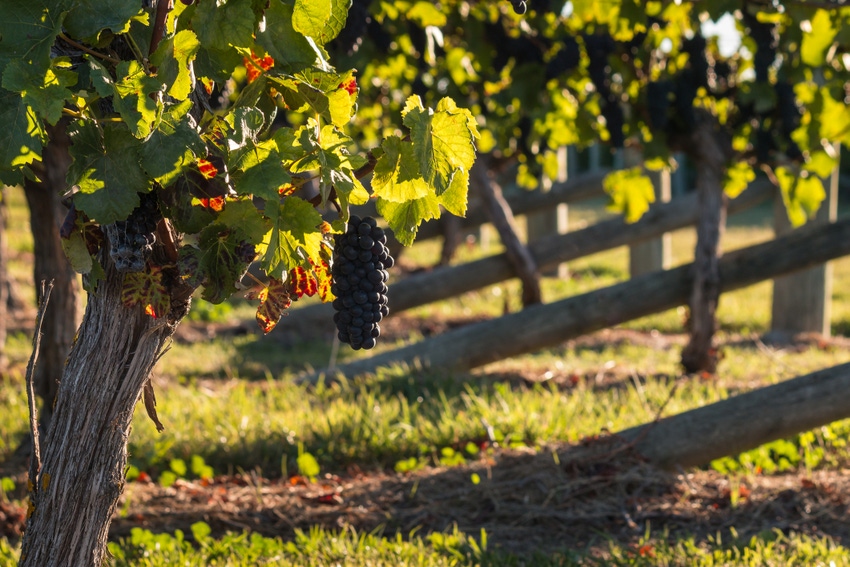
The first week of August marked the start of this year’s Central Coast wine grape harvest. That’s a little earlier than usual. But it’s not as early as some had been expecting several months ago. That was after vine and berry growth had shot off a fast start, but before some hot weather in June and again in July slowed things down in the vineyards, notes veteran grower John Crossland.
The harvest kicked-off in Santa Barbara County and such areas as the Edna Valley, in the southern part of San Luis Obispo County, with growers picking Pinot Noir and farther north in Monterey County as crews began bringing in the first of the Chardonnay, Pinot Gris and Pinot Noir crops, Growers in the Paso Robles area of San Luis Obispo County followed in mid-August as they began harvesting their earliest white grapes, mainly Sauvignon Blanc.
“So far, it hasn’t been a large crop. That’s for sure,” says John Crossland, who’s been growing grapes for more than three decades. So far production is running somewhat lower than average.
His company, Vineyard Professional Services, Inc., manages more than 3,000 acres of grapes in the Paso Robles-Templeton area and consults with other Central Coast growers and vintners.
Growers here, who rely entirely on ground water to irrigate their vineyards, have had to struggle through another rain-short year.
“We’re still in a drought,” Crossland says. “What rain we got this past winter wasn’t nearly as significant as growers in the North Coast received.”
For example, annual rainfall in the area east of Paso Robles averages from 10 to 12 inches. From July 1 of last year to June 30th of this year rainfall totaled about 8 inches, while areas on the far Westside received as much as 15 inches, Crossland notes.
Meanwhile, as water tables continue to drop, irrigation water is becoming saltier forcing growers to deal with higher salinity levels in their soils.
Except for any vineyards where possible smoke taint from wildfires is a concern, the quality of this year’s Central Coast grape crop is good, Crossland says.
“Compared to last year’s very small crop, the clusters this year are filled out better with more shouldering and more berries per cluster.”
What’s more, after sitting on the sidelines waiting to get a better idea of the size of this year’s crop, buyers are back on the phones, securing supplies for their wineries and bidding up grape prices, he adds.
Vineyards haven’t been under unusual pressure from such pests as leafhoppers and spider mites this year, Crossland notes. However, despite this season’s heat spells, growers saw more outbreaks of powdery mildew than usual.
A long-time advocate of sustainable farming practices, Crossland is a member of the non-profit Vineyard Team, a grower group dedicated to sustainable winegrowing, and helped write the Code of Sustainable Winegrowing Practices developed by the Wine Institute and the California Association of Winegrape Growers (CAWG) to promote environmental stewardship and social responsibility in the California wine industry.
Interest by growers in farming in a more economically and environmentally sustainable way has continued to increase over the past few years, Crossland says. This includes more participation in the Vineyard Team’s Sustainability in Practice (SIP) Certification Program and the Certified California Sustainable Winegrowing (CCSW-Certified) offered by the California Sustainable Winegrowing Alliance.
These growers are also focusing more attention on their human resources, a key component of sustainable farming, he adds. “With the declining number of farm workers, growers are realizing the value of developing the type of relationships needed to keep these workers,” he says. “So they’re showing their workers greater respect and providing them the training they need to work safely and the conditions, including such basics as plenty of water, shade and adjusting schedules to avoid working in extremely hot temperatures, needed to protect their health.”
Meanwhile, efforts to increase mechanization continue throughout the industry, Crossland adds.
About the Author(s)
You May Also Like




